- News
- Reviews
- Bikes
- Accessories
- Accessories - misc
- Computer mounts
- Bags
- Bar ends
- Bike bags & cases
- Bottle cages
- Bottles
- Cameras
- Car racks
- Child seats
- Computers
- Glasses
- GPS units
- Helmets
- Lights - front
- Lights - rear
- Lights - sets
- Locks
- Mirrors
- Mudguards
- Racks
- Pumps & CO2 inflators
- Puncture kits
- Reflectives
- Smart watches
- Stands and racks
- Trailers
- Clothing
- Components
- Bar tape & grips
- Bottom brackets
- Brake & gear cables
- Brake & STI levers
- Brake pads & spares
- Brakes
- Cassettes & freewheels
- Chains
- Chainsets & chainrings
- Derailleurs - front
- Derailleurs - rear
- Forks
- Gear levers & shifters
- Groupsets
- Handlebars & extensions
- Headsets
- Hubs
- Inner tubes
- Pedals
- Quick releases & skewers
- Saddles
- Seatposts
- Stems
- Wheels
- Tyres
- Health, fitness and nutrition
- Tools and workshop
- Miscellaneous
- Buyers Guides
- Features
- Forum
- Recommends
- Podcast
review
£1,799.99
VERDICT:
Smooth-riding performance bike for getting in the big miles in comfort
Weight:
8,320g
Contact:
www.cannondale.com
At road.cc every product is thoroughly tested for as long as it takes to get a proper insight into how well it works. Our reviewers are experienced cyclists that we trust to be objective. While we strive to ensure that opinions expressed are backed up by facts, reviews are by their nature an informed opinion, not a definitive verdict. We don't intentionally try to break anything (except locks) but we do try to look for weak points in any design. The overall score is not just an average of the other scores: it reflects both a product's function and value – with value determined by how a product compares with items of similar spec, quality, and price.
What the road.cc scores meanGood scores are more common than bad, because fortunately good products are more common than bad.
- Exceptional
- Excellent
- Very Good
- Good
- Quite good
- Average
- Not so good
- Poor
- Bad
- Appalling
Here's the thing about the claims Cannondale make for the comfort of the Synapse: they're accurate. This is a really smooth-riding bike.
If you've been into bikes longer than five minutes, you'll know that pretty much every manufacturer claims that pretty much every road bike in their range is laterally stiff and vertically compliant. They transfer power spectacularly well and steer as if they're on rails, but they're as comfortable as a soft featherbed. It's almost as if some of them know what you want to hear and say it, regardless of the bike's actual characteristics. Almost.
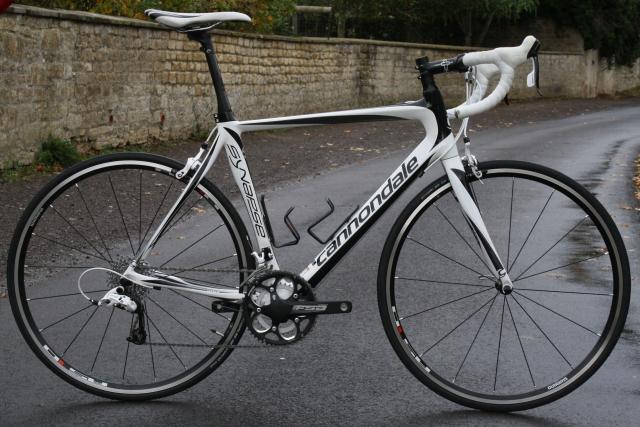
The Synapse, though, is a genuinely smooth ride. Cannondale have got the comfort sorted. Of course, you're not going to jump on this bike and have the frame drop down as if you were climbing aboard a full suspension mountain bike. No, it's subtle. You won't even notice it to begin with. But after a while you start to realize that you're feeling... well, comfortable. And you stay feeling comfortable.
Yes, you can get rattled about on this bike. Of course you can. You can feel a bit battered and achy at times... Just not as soon as normal and not as much as normal.
So how do Cannondale achieve this? Good question. I'll answer it. First, the Synapse comes with SAVE Plus stays. SAVE stands for Synapse Active Vibration Elimination - the marketing department must be very proud of that one. Plus stands for... well, nothing. It's just that this is a development of the original SAVE design.
Cannondale call SAVE Plus a 'micro suspension system'. Okay, fair enough, but don't be disappointed by the lack of coil springs. What they mean is that the stays 'feature a flattened area that can deflect vertically to absorb road buzz and shock while the increased width resists side-to-side and torsional flex.'

Told you: laterally stiff and vertically compliant. The profile of each chainstay is flattened down so it's much wider than it is tall. The idea is, it'll flex up and down much easier than sideways. A picture's worth a thousand words so take a look at the photo to save me gibbering on about it.
The seatsays take the scenic route from the dropouts to the seat tube, weaving about all over the place and possibly stopping for a picnic on the way. I'm not convinced this makes a whole heap of difference to the performance - or any difference at all, come to that - but that's impossible to assess. They're certainly skinny, and that lack of material doubtless does contribute to the flex back there.
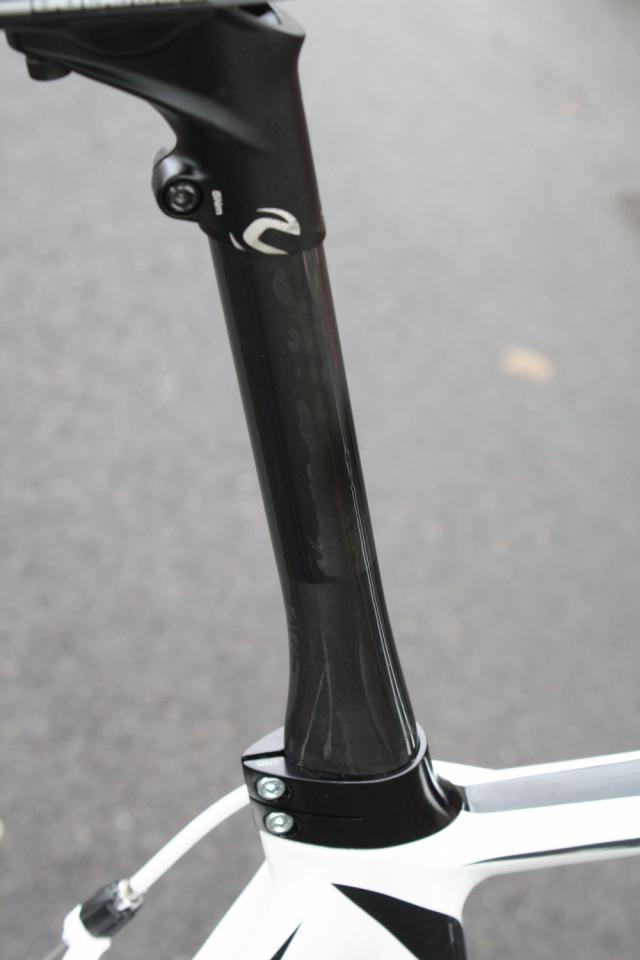
The second aspect of the SAVE Plus system is the MultiFlex seatpost. Right... the bottom of the post has an aero profile, the same as the seat tube. Then it tapers right in so most of the exposed section is super slim to adds a bit of flex.
The seatpost is actually available in two different types, one firmer than the other. Cannondale fit the firmer one to size 56cm bikes and above on the basis that larger riders will flex this one as much as a smaller rider flexes the soft one. If you like, you can buy the other version aftermarket to fine-tune the ride, although a price for this has yet to be set.
Whichever post you go for, it comes with a removable alloy saddle clamp. What's the point of that? If the saddle is too high and you can't lower the seatpost into the frame any further because of the change in profile, you can cut the top off the seat post then put the saddle clamp back in place.
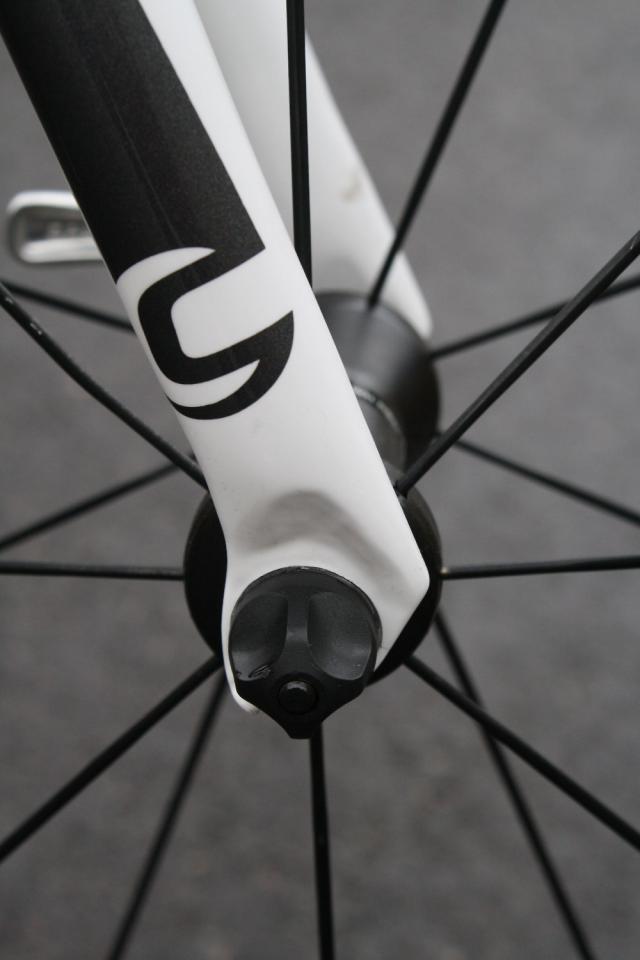
The final aspect of the SAVE Plus system is the fork which doesn't actually look all that distinctive. Examine it closely and you'll see that the dropout is off centre. Does that make a difference? Maybe. I'd set more store on the fact that the carbon lay up is designed for 'increased vertical deflection and vibration absorption with no loss of steering precision.' You know what that means, don't you?
I didn't actually notice any difference in the level of comfort at the front end of this bike compared to any other. If it is there, it's marginal. As far I'm concerned, it's the back end of this bike where the added comfort is.
So, there you go, that's the SAVE Plus system and although you'll probably feel sceptical, it does work. We're not talking about bags of deep, plush suspension, we're talking about a ride that's a touch more forgiving than usual with slightly less buzz. That's why Liquigas-Cannondale riders often use the Synapse rather than the SuperSix over the cobbles in races like Paris-Roubaix and the Tour of Flanders. The marketing guys doubtless encourage that but the benefits are real.
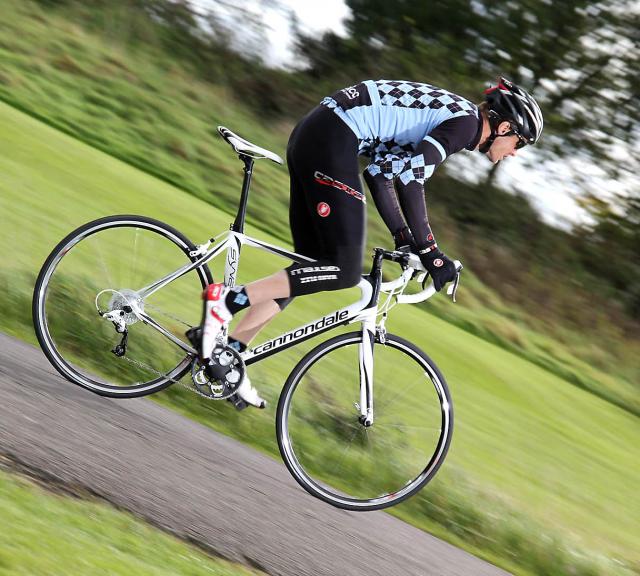
So far I've focused exclusively on the SAVE Plus system but the Synapse is far from a one trick pony...
There are nine Synapse bikes in the range, the cheapest three built around alloy frames. Of the six carbon models, the top two - in Shimano Dura-Ace and SRAM Red builds - use high modulus carbon. This Apex version is the cheapest of the carbon models. Pay more and you can get Shimano 105 or Ultegra built, or go for SRAM Rival.
Although it's still very much a performance-orientated bike, the Synapse's geometry is designed to offer a ride position that's a little more upright than the SuperSix's. The head tube on the 56cm model is 18cm, for example, compared to 15.5cm on the SuperSix, and the head tube angle is half a degree slacker.
The reach - the horizontal distance from the bottom bracket to the top of the head tube - is a touch shorter (38.6cm rather than 39.4cm) and the stack - the vertical distance from the bottom bracket to the top of the head tube - is a little higher (56.6cm versus 56.0cm).

We had a stack of headset spacers to play with too, which I promptly swapped from underneath the stem to above it to lower the compact handlebar and get a position I was happy with. Don't get me wrong, the Synapse's ride position isn't as upright as something like the Specialized Roubaix's, but it's a little less head-down than normal.
The head tube isn't tapered, it houses 1 1/8in bearings at each end although you'd do well to notice much difference from an oversized design in use. As you might expect, the bottom bracket is a BB30, the standard that Cannondale themselves introduced to the world. The shell is a chunky piece of work that holds everything firm when you pile on the power. I could induce very little in the way of sway even when I stuck the bike into a too-hard gear and swung off the pedals.

Speaking of gears (I know; seamless!), this bike's SRAM Apex groupset comes in fetching white, matching the frame perfectly. I think it looks cool. In terms of performance, the most obvious feature here is the size of the gears. The compact FSA Omega chainset (50/34T) is hooked up to an 11-32T cassette.
When you're in the small chainring and the biggest sprocket, you're less cycling and more winching. You could ride up walls in that combination (that's hyperbole; don't try it). You might be glad of it, you might not. One thing's for sure, you'll never run out of gears even on the last steep climb of a hilly sportive.

The Synapse climbs well anyway. Weighing in at 18.3lb (8.32kg), it's not the lightest sub-£2,000 bike out there but it's not heavy either. That super-wide cassette means there are a couple of big jumps between the smaller gears that take some getting used to. You go from 24T to 32T in one go which can knock you off your rhythm, so it's probably a good idea to hold that big sprocket in reserve until you need to get out of jail free.
One final thing to mention: the wheels. The Synapse comes equipped with Shimano RS10s which are certainly entry level and not especially light - you're looking at about 1,850g for the pair - but the hubs are good.
Rather than sealed bearings, the hubs use angular contact bearings that you can adjust precisely. The seals work well too. These aren't the fastest wheels in the world but as long as you give them a quick once-over occasionally they should last for ages.
Verdict
Smooth-riding performance bike for getting in the big miles in comfort
road.cc test report
Make and model: Cannondale Synapse Carbon Apex
Size tested: White - 56cm
About the bike
State the frame and fork material and method of construction. List the components used to build up the bike.
Frame Synapse, full carbon, SAVE Plus, BB30
Fork Synapse, carbon blades, SAVE, 1-1/8in
Chainset FSA Omega BB30, 50/34
Bottom bracket FSA BB30
Shifters SRAM APEX
Cassette SRAM APEX, 11-32, 10-speed
Chain KMC DX10SC, 10-speed
Front mech SRAM APEX, braze-on
Rear mech SRAM APEX WiFli
Tyres Schwalbe Lugano wire, 700x25c, black
Brakes SRAM APEX
Handlebar Cannondale C3 Compact
Stem Cannondale C3, 31.8, 6 deg.
Headset Synapse Si, 25mm top cap
Bar tape Cannondale 3mm Suede with gel backing
Saddle Cannondale Stage Ergo with cromo rails
Seat Post Synapse SAVE PLUS MultiFlex, (soft on sizes 48-54cm, firm on sizes 56-61cm)
Shifters SRAM APEX
Tell us what the bike is for, and who it's aimed at. What do the manufacturers say about it? How does that compare to your own feelings about the bike?
Cannondale call the Synapse a 'performance' bike as opposed to the SuperSixes which are 'elite'. The Synapse has a slightly more relaxed setup. Your body position isn't quite as low and stretched as it is on a SuperSix but this is still a bike that's designed to go fast.
Liquigas-Cannondale often use the Synapse across the pav. Chances are you don't do much cobble-riding around your way but you might prefer this position and the smooth feel for long days in the saddle, including sportive riding.
Frame and fork
Overall rating for frame and fork
9/10
Tell us about the build quality and finish of the frame and fork?
Really good throughout
Tell us about the materials used in the frame and fork?
The frame is carbon -not the high modulus material that Cannondale use on their high end Synapses, but their standard formula. Cannondale list the frame as having carbon blades but the steerer is carbon too.
Tell us about the geometry of the frame and fork?
Check out the main text for all the details. In brief, the Synapse has a shorter reach and a slightly higher stack height than Cannondale's SuperSix although the ride position isn't at all 'sit up and beg' - it's still efficient.
How was the bike in terms of height and reach? How did it compare to other bikes of the same stated size?
See above. The 56cm model has a 56cm top tube; about normal.
Riding the bike
Was the bike comfortable to ride? Tell us how you felt about the ride quality.
Yes, very comfortable; that's this bike's USP. Check out the main copy for all the details. Don't expect it to be radically different from many other bikes out there; there's just a touch more comfort than you'll get on most road bikes, and a touch less buzz.
Did the bike feel stiff in the right places? Did any part of the bike feel too stiff or too flexible?
Yes, the BB30 bottom bracket is pretty rigid... the Shimano wheels a little less so.
How did the bike transfer power? Did it feel efficient?
Yes, definitely an efficient bike
How would you describe the steering? Was it lively, neutral or unresponsive? Neutral; about the norm for a road bike.
Tell us some more about the handling. How did the bike feel overall? Did it do particular things well or badly?
You get a touch more stability than on Cannondale's SuperSix.
Which components had the most effect (good or bad) on the bike's comfort? would you recommend any changes?
The seat post provides a reasonable amount of flex. I got on fine with the saddle too. Good gel bar tape is a useful addition too.
Which components had the most effect (good or bad) on the bike's stiffness? would you recommend any changes?
The FSA Omega chainset provides good rigidity, largely because it's a BB30 design.
Rate the bike for efficiency of power transfer:
8/10
Rate the bike for acceleration:
8/10
Rate the bike for sprinting:
8/10
Rate the bike for high speed stability:
8/10
Rate the bike for low speed stability:
8/10
Rate the bike for flat cornering:
8/10
Rate the bike for cornering on descents:
8/10
Rate the bike for climbing:
7/10
The drivetrain
Rate the drivetrain for performance:
7/10
Rate the drivetrain for durability:
8/10
Rate the drivetrain for weight:
7/10
Rate the drivetrain for value:
7/10
Most £1,800 bikes have a higher level groupset than Apex. It's clear that most of your money is going on the frame and forks.
Wheels and tyres
Rate the wheels and tyres for performance:
7/10
Rate the wheels and tyres for durability:
7/10
Rate the wheels and tyres for weight:
7/10
Rate the wheels and tyres for comfort:
8/10
Rate the wheels and tyres for value:
6/10
They're decent entry-level wheels but not especially good value on an £1,800 bike
Controls
Rate the controls for performance:
8/10
Rate the controls for durability:
8/10
Rate the controls for weight:
8/10
Rate the controls for comfort:
8/10
Rate the controls for value:
7/10
Your summary
Did you enjoy riding the bike? Yes
Would you consider buying the bike? It's not the one for me but it achieves its goals very well
Would you recommend the bike to a friend? Yes
Rate the bike overall for performance:
8/10
Rate the bike overall for value:
8/10
Anything further to say about the bike in conclusion?
If you're after a bike that combines performance with all-day long comfort, you have to consider a Synapse. This is the cheapest way to get the carbon version
About the tester
Age: 40 Height: 190cm Weight: 74kg
I usually ride: My best bike is:
I've been riding for: Over 20 years I ride: Most days I would class myself as: Expert
I regularly do the following types of riding: time trialling, commuting, sportives, general fitness riding,
Mat has been in cycling media since 1996, on titles including BikeRadar, Total Bike, Total Mountain Bike, What Mountain Bike and Mountain Biking UK, and he has been editor of 220 Triathlon and Cycling Plus. Mat has been road.cc technical editor for over a decade, testing bikes, fettling the latest kit, and trying out the most up-to-the-minute clothing. He has won his category in Ironman UK 70.3 and finished on the podium in both marathons he has run. Mat is a Cambridge graduate who did a post-grad in magazine journalism, and he is a winner of the Cycling Media Award for Specialist Online Writer. Now over 50, he's riding road and gravel bikes most days for fun and fitness rather than training for competitions.
Latest Comments
- Runtilyoudrop 2 sec ago
Does this mean they will answer my emails and give my money back?
- OldRidgeback 7 min 45 sec ago
Yes, it's something I notice a lot when I'm cycling in traffic or riding my motorbike in traffic. I pass a lot of vehicle with drivers obviously...
- BBB 3 hours 18 min ago
Inhumane system that now will be getting even worse.
- Bungle_52 6 hours 42 min ago
In case anyone missed it in yesterdays blog here are the two pevious articles. The second one contains the testimony from the driver....
- David9694 6 hours 51 min ago
The old role was appointed at the Mayor's pleasure; is in addition to the permanent staff of the Combined Authority. I'm not sure if Adam was an...
- WillPage 8 hours 17 min ago
Nothing says "welcoming environment" like uniformed thugs, umm I mean "security patrols " roaming the area.
- Destroyer666 10 hours 17 min ago
Pretty clearly stated several times in the text that the issue was not related just to his son. And besides, everybody watching the races could see...
- Rendel Harris 10 hours 33 min ago
All Fizik and Selle Italia saddles (though not all their other products) are made in Italy I believe, and their 3D printed models definitely are.
- chrisonabike 10 hours 58 min ago
If you're not on the road with a car, I bet its driver is much less likely to swerve into your space *. Because you're not "in the way"! (Any...
- mdavidford 11 hours 15 min ago
The problem with this argument, though, is that it's just not true....



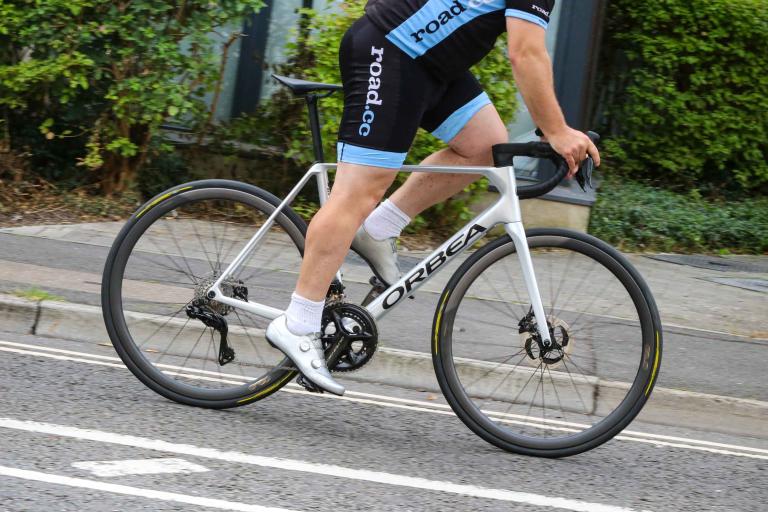
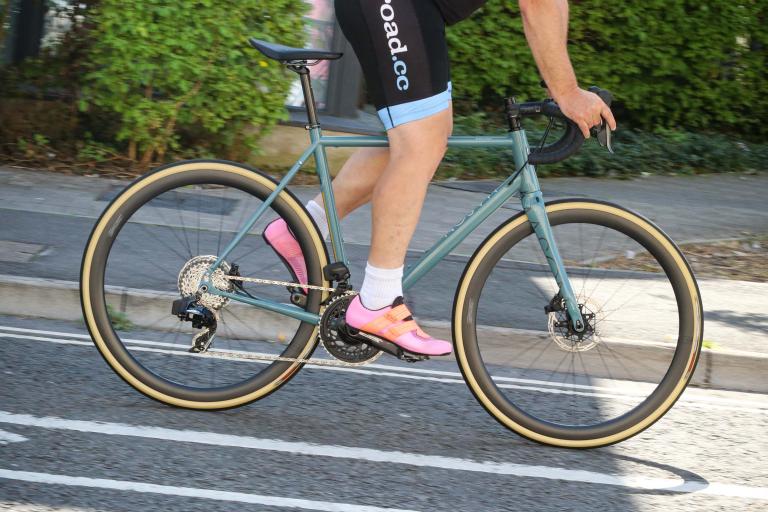
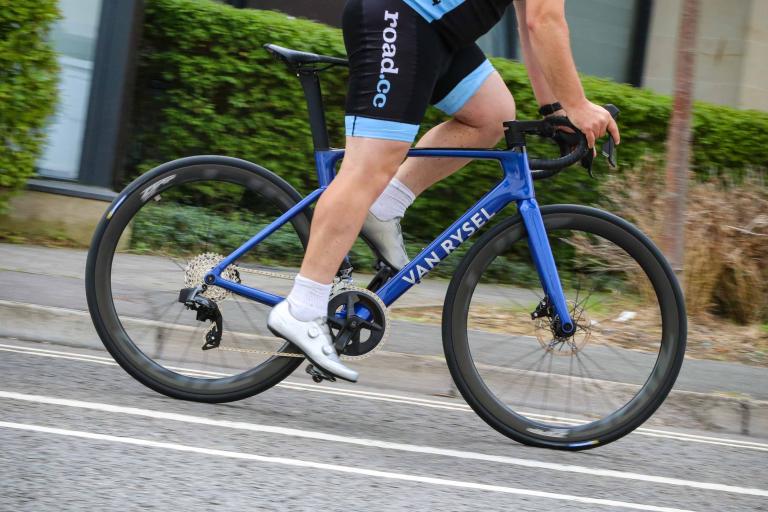
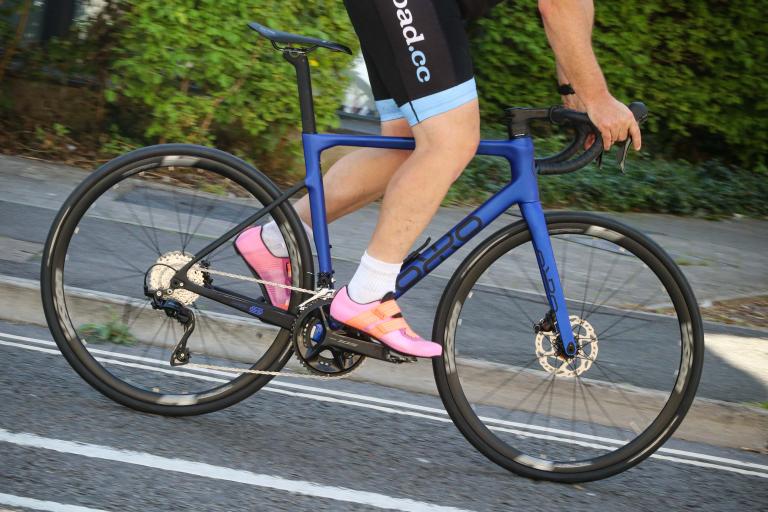
Add new comment
3 comments
I bought one a few months ago and couldn't be happier. I tried a few other bikes but my back wasn't happy. The position on the Synapse is perfect.
My first experience of SRAM and I find I get on with it really well. I came from a steel bike with a triple so it's really good to have a similar range of gears with just a compact. Winch on...
Hi great review. Just a question to the test rider at 190cm.
Would he usually ride a 58cm in a super six? Does the higher head tube with the synapse allow a bit of flexability with choosing frame sizes. Thanks
bike sounds nice, and it's a good review. but by any engineering definition, that "vibration elimination" system is NOT active. there.